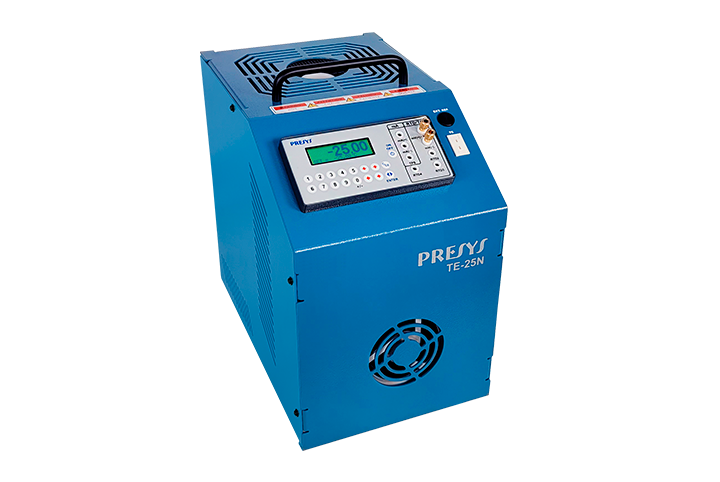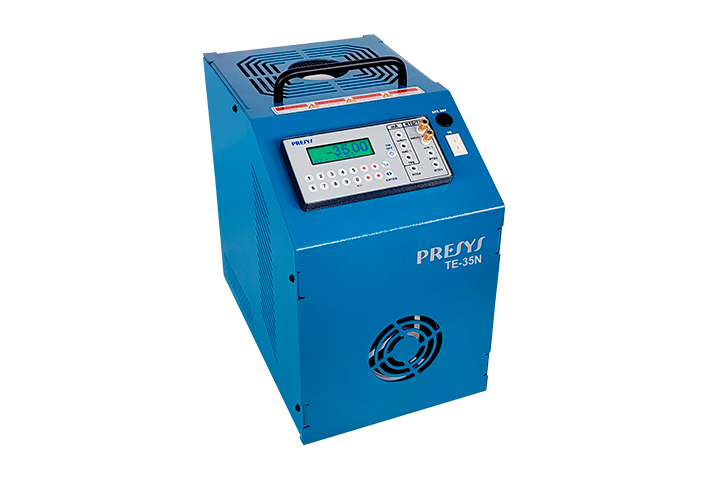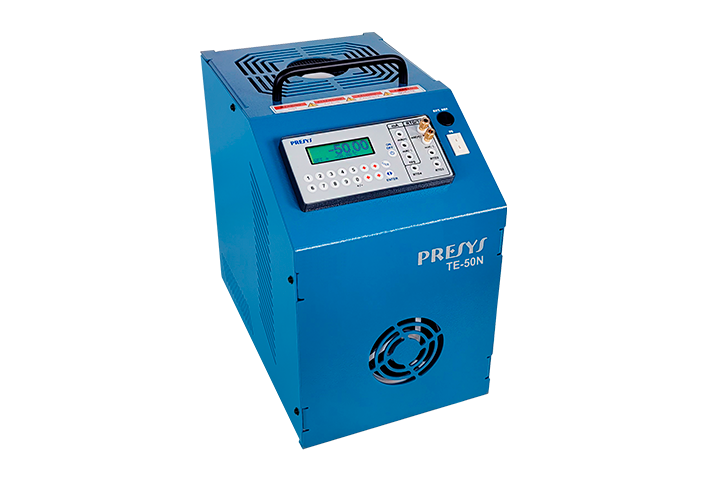The TE-25N, TE-35N and TE-50N Dry Block Calibrators perform functions that would require three different types of instruments: dry block calibrator, standard thermometer and calibrator for TCs, RTDs, mA, mV, ohms and thermoswitches.
- Model TE-25N, TE-35N and TE-50N reachs -25 °C in an ambient temperature of 23 °C, with no need of well insulator.
- Resolution of 0.01 °C.
- Stability of ±0.02 °C for all the temperature range.
- Input for RTD, thermocouples and thermoswitches.
- Internal regulated 24 Vdc power supply and mA input for 2-wire transmitters.
- Complete automatic calibration with or without the use of a computer
(auto-cycling). - Documenting capabilities: connection with computer and ISOPLAN®
calibration software.
The TE-25N, TE-35N and TE-50N models control temperature over an insert in order to calibrate thermocouples, thermoresistances, thermoswitches etc. Besides providing high accuracy temperature values, they also allow the measurement of signals generated by the thermocouples, thermoresistances and thermoswitches, which are being calibrated. This is possible due to an embedded calibrator specific for these types of signal, including 4-20 mA. They incorporate the function of dry block, standard thermometer and calibrator for RTD and TC sensors, besides mA reading. They present a wide range of programming resources, allowing them to perform automatic calibration of the sensors. In this case, the sensor is placed in the insert and its electrical terminals are connected to the embedded calibrator, the operator defines the calibration points and the number of repetitions, then the process is started so that all the sequence is automatically accomplished. Another way of performing automatic documented calibrations is by means of ISOPLAN® calibration software for PC/WindowsTM which uses the RS-232 serial port to connect PC to the dry block. With ISOPLAN® it is possible to register sensors and instruments of the factory, generate work orders, create and print calibration certificates and reports, i.e., it brings all the advantages of computer data management to the calibration environment.




